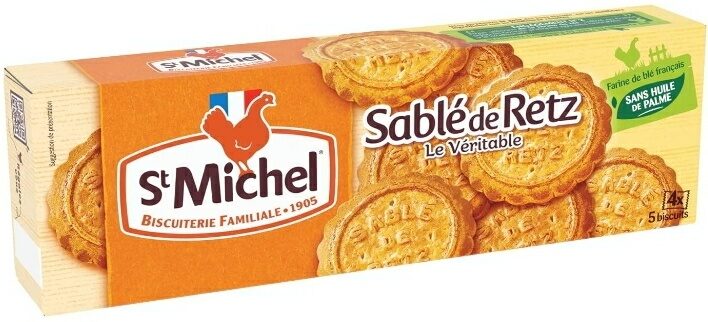แซงมิเชลคุกกี้มะพร้าว - St Michel - 120 g
Barcode: 3023470010017 (EAN / EAN-13)
Common name: Sablés à la noix de coco
Quantity: 120 g
Packaging: fr:FILM PLASTIQUE PENSEZ AU TRI! A JETER ETUI CARTON A RECYCLER
Brands: St Michel
Categories: Snacks, Sweet snacks, Biscuits and cakes, Biscuits, Shortbread cookies, Shortbread cookie with coconut
Labels, certifications, awards:
Made in France, No colorings, No palm oil, Nutriscore, Nutriscore Grade D, Triman
Origin of ingredients: France, Unspecified, fr:Farine de blé français
Manufacturing or processing places: France
Link to the product page on the official site of the producer: https://www.stmichel.fr/nos-produits/det...
Stores: Intermarché, Super U, E.leclerc, Auchan, Carrefour, Cora, Franprix, Magasin U, Lidl, carrefour.fr
Countries where sold: Belgium, France, Martinique, Réunion, Switzerland
Matching with your preferences
Report a problem
Data sources
Product added on by openfoodfacts-contributors
Last edit of product page on by buzore.
Product page also edited by aleene, alex00134, alexg, ant44, camillem, cestki13, charlesnepote, date-limite-app, dorado-jerome, driveoff, foodless, foodrepo, foodvisor, halal-app-chakib, jean888, kiliweb, morganesh, openfood-ch-import, packbot, pommeorange147, roboto-app, scanbot, sebleouf, stefsmash, tacite, teolemon, thogils, twoflower, yuka.R0prL0Y0TTltOFVPcXZRNm9BblkwOGhvbks2VVEyR3VMOGtVSVE9PQ, yuka.VnJzbVNxQUhuTk1BbXZjRDBqL0gydUFyMlppYllFZXVPdG9MSWc9PQ, yuka.WTVndVNvTXZ1ZDBPdHNBRDVoMzcrZHdwemNHelgwUHJDN05NSVE9PQ, yuka.WnFRdExwWWJpNmNrd2MwQjh4K0x5UGRLNnJXcFZtZTREUEk5SVE9PQ, yuka.ZVlvNkMva3VuZm9zbXYwRHAwL1A1ZDF1MzVtbFlVMjJFclVTSVE9PQ, yuka.ZlAwQ0ZmMWQ5Lzh0bXZZUzF6THk0ZjBybDYySFJFYVBMN3BBSUE9PQ, yuka.sY2b0xO6T85zoF3NwEKvlmJ3TP7UgD-ZHiXli3yqn-WHI7n1OvIp7oL_bqo, yukafix.
Last check of product page on by pommeorange147.












